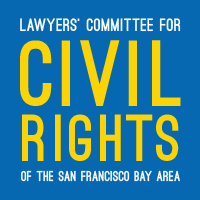Anniversary of Uprisings: The Lasting Impact of Police Violence
by Tifanei Ressl-Moyer Esq.
Incredibly effective.
These are the words I use to describe the tactics of the Sacramento City Police Department during the uprisings that flooded our city streets after police took the life of George Floyd two years ago.
The severe bruises that laced the bodies of protesters have faded. The broken bones of participants have mended. What remains are the lasting effects of the individual and collective trauma inflicted on our community by its own government.
The police department, and other agencies, violently stripped away any collective sense of safety or right to freely express ourselves during protest in support of racial justice.
In those summer days, we could not find safety in docility. The police repeatedly and indiscriminately deployed weapons of war into a crowd of people who were primarily kneeling, chanting, and holding hands.
We could not find safety in good will. The police aimed their projectile weapons at the heads and groins of volunteer medics, legal observers, and others who aided protest participants, leaving some people with permanent brain injuries and disabilities.
We could not find safety even in our homes. The police employed drones, license plate readers, and raids to surveil and find protesters where they lived with their families—even months after the protests had ended.
Sacramento community members now experience panic attacks whenever and wherever they encounter law enforcement. I have interviewed people who experience destabilizing flashbacks of the police violence when they go into the city center for something as simple as running an errand, and others still experience suicidal ideations, unable to imagine a future where they may feel safe again.
Entire organizations, families, and relationships were torn apart in the aftermath of the violence, a known consequence of collective trauma. The police’s actions incredibly effectively ripped apart the community where people once felt safe.
Today, many city residents refuse to join protests because the consequences are too great. And for those who continue to protest, we remain fearful and hypervigilant.
By failing to take meaningful action in response to these violent incidents, the Mayor and City Council have continued to condone the police tactics and their effects.
In January 2021, the Council voted on a strategy to address the public’s concerns by directing a volunteer-based commission and the city office of public safety and accountability to review the incidents. Yet, the council ignored the commission’s recommendations, and the Office of Public Safety and Accountability has produced nothing tangible for the public to view.
The Council also voted to create the Department of Community Response, to reduce unnecessary reliance on police, including for houselessness and mental health crisis calls. But the nascent department is severely under-resourced, especially as compared to the police unit it was intended to replace, which remains well-funded and very active.
The Mayor and City Council approved a record high police budget of $166 million last year—which exceeded $207 million with funds realigned from Measure U–and is set to approve an even higher budget this year with no evidence that these funds have increased public safety. The Council is also poised to approve the police’s acquisition and use of military-grade weapons, with almost no limitations nor proof of efficacy, the same weapons used during the violent police response to the 2020 uprisings.
Where our government’s actions and inactions intended to create an environment of fear for protesters of police violence, it has been a lasting victory. And our friends, families, and neighbors continue to silently endure a painful aftermath.
—
Tifanei Ressl-Moyer Esq. is a Senior Racial Justice Attorney for the Lawyers’ Committee for Civil Rights of the SF Bay Area. Tifanei works and lives in Sacramento and is one of the lead attorneys representing clients in the case White et. al v. Sacramento Police Department, a case challenging the police response to racial justice protest.
